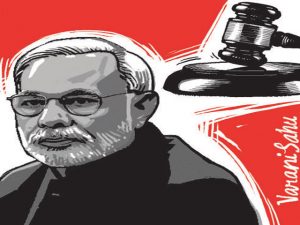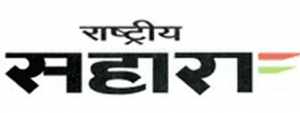
02-11-2016 (Important News Clippings)
To Download Click Here
Open for business
Granular data from states can nudge them into competing and pushing reform
There was a lot of disappointment when India moved up just one spot in this year’s World Bank ease of doing business ranking, to 130 among 190 countries. But as this ranking covers only Delhi and Mumbai, the report’s authors acknowledged that it didn’t reflect remaining states’ progress in improving the business environment. Thankfully that kind of granular data is now available in an ease of doing business ranking for all the states, conducted by DIPP and also the World Bank. Its second iteration shows a lot of churn since last year – for example from 13th Telangana has climbed to the top rank, which it shares with Andhra Pradesh.
Indian reforms have for too long come top-down from the Centre, whereas what transformed China was its provinces taking ownership of reforms. The new ranking could nudge Indian states into taking similar initiative by engaging in healthy and vigorous competition among themselves. If it’s clear that Andhra Pradesh and Telangana have raced to out-reform the other, for the laggards too it should be clear what shortfalls in regulatory processes and policies need fixing. After all a DIPP online dashboard tracks the implementation of reforms in real time.
Punjab for example needs to study why it is ranked 12 while its erstwhile poorer cousin Haryana is ranked 6 – up from 14 last year. How has one state made the most of new wave opportunities from IT to automobile manufacturing while its neighbour missed one bus after another? The states which have slipped since last year must urgently take remedial action and reboot reforms. At 19 Delhi is a huge underperformer – down from 15 last year. Karnataka has dropped from 9 to 13, Tamil Nadu from 12 to 18. For different reasons in all these states the political focus has shifted away from reforms. The new states data ensures that the results of such neglect surface fast so that course correction can be undertaken as fast.Not a single state implemented more than 75% of the reforms listed by DIPP last year but this year 16 states did. Investors have begun taking serious note of these granular developments. Alongside investors the Centre should also reward reforming states. Of course the overall credibility of this rating system depends critically on robustness of data. Its gathering must therefore remain immune from political pressure.
Date: 02-11-16
Spare the schools
Kashmir school burnings meant to cripple local youths’ and state’s future
The school-burning spree in Kashmir over the past three months that has seen 27 schools being torched has sent alarm bells ringing. No group has claimed responsibility for the despicable acts nor have the police been able to establish the identity of the arsonists. This has forced the Jammu & Kashmir high court to direct the police and civil administration to ensure protection of schools and bring the perpetrators to justice. With Kashmir being in shutdown mode since the killing of militant Burhan Wani in July, the academic cycle of schools has suffered. But the school burnings escalate things further and represent a direct assault on the future of Kashmiri youth.
In that sense, the cases of arson are reminiscent of the Taliban’s barbaric assault on girls’ schools in Pakistan’s Swat Valley in the 2007-09 period or attacks on Afghan schools since. Teenaged activist Malala Yousafzai had documented the Taliban’s ban on girls’ education. She was later shot by the extremists but survived and went on to become a strong voice for education across the globe. Similarly, all sections of Kashmir must stand up to criminal elements who are targeting schools. The latter is part of a nefarious design to keep children on the streets, prevent normalcy from returning to the Valley and destroy the economic prospects of the state.Preventing children from going to school would make it easier for separatists and militant groups to funnel Kashmiri youth into militancy. Besides, it’s a well-known fact that children and family members of separatist leaders are often sent abroad or to other parts of India to obtain quality education. The J&K administration must act to protect schools, and the double standard of separatists claiming to represent the interests of the Kashmiri people must be thoroughly exposed.
India definitely needs an army of judges

We need comprehensive judicial reform to cover the whole gamut of requirements: more judges, streamlined procedure to hear cases continuously, sort cases by the legal principle at stake, and identify
settled judicial opinion, so that junior courts do not waste time and money delivering judgments that are guaranteed to be overturned by a higher court. Videographed court proceedings that can be subjected to audit by a body drawn from former members of the higher judiciary makes sense. Globally, electronic court systems have been found to have cut the time and costs associated with filing, administering, tracking and resolving legal disputes. They allow for more efficient record management in courts. However, states have a distance to go.
Date: 02-11-16
Body armour, body cameras for police

These recommendations make as much sense today as they did in 1997. But these measures are ex post. We also need to adopt preventive measures ex ante. The most sensible thing to do is to make all police personnel wear body cameras that videograph all engagement of the police with the public. Policemen should be provided with body armour and with video cameras. The first would offer some degree of protection from firearms that miscreants increasingly carry in India. The second would protect both the public and the police, and also facilitate the task of documenting crime scenes, etc. Videographic evidence of how the police carries out interrogation would help them break the mould, formed in colonial times, of using force, intimidation and torture to get information and confessions out of suspects and pave the way for more civilised and effective investigation. It would also protect the police force from false and motivated allegations. This has been the experience in London. The public would get protection from illegal coercion on the part of the police.The Madhya Pradesh government should set an example by adopting the NHRC recommendation, in the wake of the Bhopal encounter, and by mandating body armour and body cameras for policemen.
समग्र कृषि सुधार
नैशनल इंस्टीट्यूट फॉर ट्रांसफार्मिंग इंडिया (नीति) आयोग में यह विचार थोड़ा देर से आया है कि कृषि क्षेत्र में आमूलचूल बदलाव लाए बगैर कृषि वृद्घि दर में इजाफा और किसानों की आय बढ़ाना संभव नहीं है। उसका यह भी मानना है कि राज्य सरकारें इस मोर्चे पर आवश्यकतानुसार कदम नहीं उठा रही हैं। सन् 1991 से किए जा रहे आर्थिक सुधारों में कृषि क्षेत्र को या तो किनारे लगा दिया गया या फिर उसमें बहुत मामूली दखल दिया गया। यही वजह थी कि यह क्षेत्र अपनी पूरी संभावनाओं के साथ विकास नहीं कर सका। अभी भी नीति आयोग ने तीन क्षेत्रों को ही तत्काल कदम उठाने के लिए चुना है जबकि जरूरत कृषि सुधारों की दिशा में व्यापक पहल की थी। लैंड लीजिंग और फार्म फॉरेस्ट्री के अलावा कृषि विपणन में सुधार का चयन सुधार के लिए किया गया है। इस क्षेत्र में वर्षों से काम हो रहा है लेकिन कोई उल्लेखनीय परिणाम सामने नहीं आया है। हालांकि कई राज्यों ने अपने यहां कृषि उपज विपणन समितियों (एपीएमसी) अधिनियम में संशोधन किया है लेकिन उनमें से अनेक राज्य ऐसे हैं जिन्होंने केंद्र द्वारा सन 2003 में वितरित मॉडल का इस डर से अनुकरण नहीं किया कि उनको मंडी राजस्व का नुकसान होगा। नीति आयोग ने अब एपीएमसी ऐक्ट के नए मॉडल की पेशकश की है। इसके जरिये राजस्व के मसले को भी हल किया जाएगा और उत्पादकों और अंतिम उपभोक्ताओं के बीच सीधे लेनदेन के जरिये बिचौलियों की भूमिका खत्म की जाएगी।
Date: 02-11-16
भविष्य के विकास में पानी की भूमिका
भविष्य में आर्थिक विकास करने और जल संकट से निपटने के लिए हमें अतीत की गलतियों पर दृष्टिï डालनी होगी और आगे बेहतर प्रबंधन करना होगा। विस्तार से जानकारी दे रहे हैं अरुणाभ घोष
न्यायाधीश नियुक्त किये जाएं
न्ययाधीशों की कमी पर सर्वोच्च न्यायालय के प्रमुख न्यायाधीश टीएस ठाकुर पहले भी नाराजी जता चुके हैं। अब एक बार फिर उन्होंने जजों की कमी जताते हुए अदालतों में ताला लगाने की स्थिति निर्मित होने की बात कही है। इस बाबत उन्होंने कर्नाटक उच्च न्यायालय में जजों की कमी के चलते एक पूरा भूतल बंद हो जाने की बात कही। साथ ही, ठाकुर ने तल्ख लहजे में कहा कि सरकार नौ महीनों में भी 77 नाम कॉलेजियम में भेजे थे, मगर अब तक महज 18 जजों के नाम ही तय हो पाए हैं। उन्होंने पहले भी कहा था, ‘‘जजों की कमी के कारण समय रहते न्याय संभव नहीं हो पा रहा है। अंग्रेजों के जमाने में 10 साल में न्याय मिलता था, वहीं अब न्याय पाने के लिए सौ साल भी कम हैं।’ यह कहते हुए उनकी आंखें नम हो गई थीं। सही है कि अदालतों में चार हजार पद खाली हैं। तीन करोड़ 40 लाख मामले लंबित हैं। लेकिन जजों की कमी के इतर भी कई ऐसे कारण हैं, जिनके चलते मुकदमों में देरी होती है, जबकि इन वजहों का मामले को सीधे-सीधे प्रभावित करने से कोई वास्ता नहीं होता है। हमारे यहां संख्या के आदर्श अनुपात में कर्मचारियों की कमी का रोना अक्सर रोया जाता है। केवल अदालत ही नहीं पुलिस, शिक्षा और स्वास्य विभागों में भी गुणवत्तापूर्ण सेवाएं उपलब्ध न कराने का यही बहाना है। जजों की कमी कोई नई बात नहीं है, 1987 में विधि आयोग ने हर 10 लाख की आबादी पर जजों की संख्या 10 से बढ़ाकर 50 करने की सिफारिश की थी। फिलहाल, यह संख्या 17 कर दी गई है। अदालतों का संस्थागत ढांचा भी बढ़ाया गया है। हमारे यहां अस्पताल ही नहीं राजस्व और पुलिस विभाग के लोग भी लगभग 365 दिन ही काम करते हैं। किसी आपदा के समय इनका काम और बढ़ जाता है। इनके कामों में विधायिका और खबरपालिका के साथ समाज का दबाव भी रहता है। बावजूद ये लोग दिन-रात कानून के पालन के प्रति सजग रहते हैं जबकि अदालतों पर कोई अप्रत्यक्ष दबाव नहीं होता है। यही प्रकृति वकीलों में भी देखने में आती है। हालांकि वकील अपने कनिष्ठ वकील से अक्सर इस कमी की वैकल्पिक पूर्ति कर लेते हैं। लेकिन वकील जब प्रकरण का ठीक से अध्ययन नहीं कर पाते अथवा मामले को मजबूती देने के लिए किसी दस्तावेजी साक्ष्य को तलाश रहे होते हैं, तो बिना किसी ठोस कारण के तारीख आगे खिसकाने की अर्जी लगा देते हैं। विडंबना है कि बिना कोई ठोस पड़ताल किए न्यायाधीश इसे स्वीकार भी कर लेते हैं। कई मामलों में गवाहों की अधिक संख्या भी मामले को लंबा खींचने का काम करती है। इस तरह के एक ही मामले में गवाहों की संख्या 50 तक देखी गई है जबकि घटना के सत्यापन के लिए दो-तीन गवाह पर्याप्त होते हैं। एफएसएल रिपोर्ट भी समय से नहीं आने के कारण मामले को लंबा खींचती है। फॉरेंसिक विज्ञान प्रयोगशालाओं की कमी होने के कारण अब तो सामान्य रिपोर्ट आने में भी एक से ड़ेढ़ साल का समय लग जाता है। अदालतों में मुकदमों की संख्या बढ़ाने में राज्य सरकारों का रवैया भी जिम्मेवार है। वेतन विसगंतियों को लेकर एक ही प्रकृति के कई मामले ऊपर की अदालतों में विचाराधीन हैं। इनमें से अनेक तो ऐसे प्रकरण हैं, जिनमें सरकारें आदर्श व पारदर्शी नियोक्ता की शत्रे पूरी नहीं करती हैं। नतीजतन, जो वास्तविक हकदार हैं, उन्हें अदालत की शरण में जाना पड़ता है। इसी तरह पंचायत पदाधिकारियों और राजस्व मामलों का निराकरण राजस्व न्यायालयों में न होने के कारण न्यायालयों में प्रकरणों की संख्या बढ़ रही है। जीवन बीमा, दुर्घटना बीमा और बिजली बिलों का विभाग स्तर पर नहीं निपटना भी अदालतों पर बोझ बढ़ा रहे हैं। कई प्रांतों के भू-राजस्व कानून विसंगतिपूर्ण हैं। इन विसंगतिपूर्ण धाराओं का विलोपीकरण करके अवैध कब्जों से संबंधित मामलों से निजात पाई जा सकती है। लेकिन नौकरशाही ऐसे कानूनों का वजूद बने रहना चाहती है, क्योंकि इनके बने रहने पर ही इनके रौब-रुतबा और पौ-बारह सुनिश्चित हैं। कारागारों में विचाराधीन कैदियों की बड़ी तादाद होने का एक बड़ा कारण न्यायिक और राजस्व अदालतों में लेट-लतीफी और आपराधिक न्याय प्रक्रिया की असफलता को माना जाता है। लेकिन अदालतें इस हकीकत को न्यायालयों और न्यायाधीशों की कमी का आधार मानकर अक्सर नकारती हैं। इसलिए अच्छा है जजों की कमी से अलहदा कारणों की पड़ताल करके उन्हें हल करने के उपाय तलाशे जाएं।



